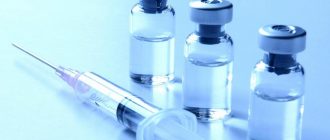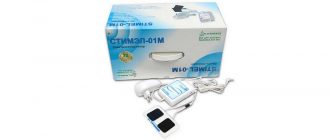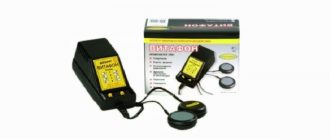Treatment of prostatitis with leeches can be prescribed as a physiotherapeutic method or for the prevention of the disease. Hirudotherapy has a positive effect in several directions at once, improves blood flow, inhibiting inflammatory and congestive processes. The specific treatment method, number of sessions and location are determined by the specialist on an individual basis.
How does hirudotherapy work?
Leech saliva contains about 100 different components that are useful for the blood circulation of the human body. It enters the blood and spreads throughout the bloodstream and nearby organs. Hirudotherapy for prostatitis helps due to the beneficial substances in saliva and the effects it provides:
- Hirudin prevents the formation of blood clots and thins the blood (this is good for blood flow and reduces inflammation, and high blood density contributes to congestion in the prostate gland).
- Destabilase dissolves already formed blood clots.
- Hyaluronidase reduces tissue scarring.
- Eglins and bradykinins suppress inflammatory processes.
Other substances in her saliva help improve capillary permeability, eliminate tissue swelling, relieve pain and reduce intoxication.
For the procedure, individuals specially grown in laboratories are used, which are absolutely sterile. Staging other individuals can lead to infections and other complications, so it is highly not recommended to carry out the procedure at home without the supervision of a specialist.
Benefit
Hirudotherapy for prostate adenoma has positive effects in 3 areas:
- general biological. When bitten, a leech saturates the blood with useful substances;
- mechanical. By sucking blood, the worm reduces blood pressure in the prostate area, which also promotes blood flow and reduces congestion;
- reflex. The placement takes place in special places that activate the reflex zones of the body. The result is similar to acupuncture.
Thanks to modern medications, hirudotherapy can be replaced by taking anticoagulants, but their effect is only aimed at improving blood flow. Therefore, even in the modern world, this method, which seems outdated, has some advantages and does not lose its relevance.
Indications
Hirudotherapy may be prescribed in the following cases:
- acute inflammation of the prostate (initial stages of the disease);
- benign prostate tumor;
- non-bacterial prostatitis of a chronic nature;
- disorders of the urinary system;
- prevention of diseases of the cardiovascular system and pelvic organs.
Contraindications
Despite the benefits of the procedure, in some cases it can lead to complications. Hirudotherapy is contraindicated for:
- tuberculosis;
- anemia (anemia);
- hemophilia (blood clotting problem);
- diabetes mellitus;
- hypotension;
- the presence of malignant formations;
- skin diseases at the sites of placement;
- allergic reaction to hirudin or other components of worm saliva.
The procedure should be carried out only when prescribed by a doctor; self-medication with hirudotherapy can not only fail to bring the desired improvement in health, but can also cause harm. The following side effects are possible after the sessions:
- Itching and swelling at the placement sites.
- Slight increase in temperature.
- Weakness and general malaise.
This is a normal reaction of the body associated with the activation of the immune system to external substances that enter the blood. After a few sessions, these symptoms will disappear or become almost imperceptible. But if they manifest themselves strongly or if there are other negative sensations, you should inform the doctor about this and stop the sessions.
Scheme for placing leeches for prostatitis
The choice of where to place leeches for prostatitis and prostate adenoma is made by a specialist after interviewing and examining the patient. The most important areas in prostate treatment are:
- sacrum area;
- area of the pubic symphysis. Leeches are installed at a short distance from the midline of the genital organ;
- the lower part of the abdominal zone, the worms are placed at a distance of about 3 fingers from the navel;
- lumbar region near 2nd and 3rd vertebrae;
- liver area. It is used not only for prostatitis and diseases of the pelvic organs, but also in the treatment of almost all diseases using hirudotherapy.
The points for leeches in prostatitis are determined only approximately, then the worm itself chooses in which place to bite. They are absolutely painless and do not cause discomfort. Procedures are prescribed at intervals of 4 days. For effective treatment, it is necessary to undergo from 2 to 4 courses of treatment within a year, with a break of 2 months between courses, each of them consists of 7-10 sessions.
The placement of leeches for chronic prostatitis and prostate adenoma differs with each session:
- In the first session, the worms are placed in the area of the liver and solar plexus. Before this, it is advisable to do a back massage, which will improve blood flow and enhance the delivery of beneficial substances from leeches. 5 individuals are used. Sometimes this session may be repeated.
- The second session is carried out in the pubic area, leeches are placed near the base of the genital organ. 3 individuals are used.
- The setting for the third and fourth sessions is determined by the doctor individually. A total of 7 individuals are used.
- In the fifth session, placement occurs on the tailbone, 3 individuals are used.
- The sixth session involves placing 5 leeches in the Michaelis diamond (slightly above the coccyx).
- At the seventh stage, the production is determined individually.
In total, 1 course requires about 35 leeches.



